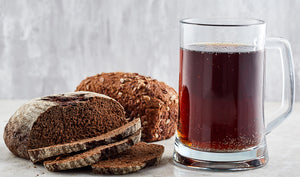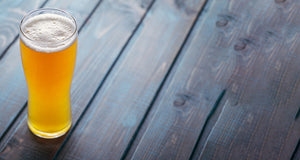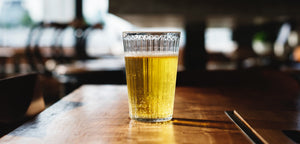India Pale Ale
India Pale Ale (IPA) was the British answer for a beer that would survive the trip from England to India without refrigeration in the 19th century. Using pale ale as a base for the recipe, IPAs were brewed with a higher volume of hops and came in at a higher ABV, a welcome treat for British soldiers in India.
Centuries later, brewers are taking IPAs to new levels. There seems to be a never-ending list of IPA styles:
- West Coast IPA
- East Coast IPA
- Double IPA
- Black IPA
- Session IPA
- Grapefruit IPA
- Milkshake IPA...
Hops & IPAs - A Complicated Relationship
Instead of diving into the chemistry of hops in this post, if you're curious, head over to The Lowdown on Hops.
In recent years, craft brewers have added more & more hops, resulting in what many refer to as "hop bombs". While some love to indulge in a bitter and high ABV beer, what is this style doing to our taste in the long run?
Hops are an integral part of IPAs. Initially extra hops were added to the brew because they acted as a preservative for the long journey by boat from England to India. However, mention an IPA to someone now and their immediate response will be about the bitterness, and that is the reason a lot of people enjoy an IPA. Have we gotten away from the balance traditional IPAs provided? Are we putting too many hops in IPAs just for the sake of making bitter beers? And what is this explosion of hoppy beers doing to our taste?
Some will argue the increased hoppiness in IPAs is alienating beer drinkers who don't like bitter beers. Others argue on a larger level it's ruining craft beer entirely because people now think all craft IPAs are going to be hop bombs. While some IPA are simply bitter hop bombs, loading an IPA with the right hops can create a flavour profile ranging from pine to grapefruit. In recent years there has been movement to bring balance back to the IPA and an increase in speciality IPAs among brewers to move away from the straight hop bombs.
IPA Categories
Before 2015, the BJCP (Beer Judge Certification Program) recognized three distinct versions of an IPA:
- English IPA
- American IPA
- Imperial IPA
In 2015 the program separated English IPA from the other versions, placing it under Pale Commonwealth Beer, and Imperial IPA was moved to its own category under the name "Strong American Ale/Double IPA".
The IPA category now consists of American IPA and Speciality IPA, which contains six styles:
- Belgian IPA: Has a distinct fruitiness from Belgian yeast.
- Black IPA: Dark beer with the same hop character as an IPA, but a mild malt and roast flavour.
- Brown IPA: Hoppy and strong but with notes of caramel and nuts.
- Red IPA: Slightly sweeter than an American IPA with mild notes of caramel, fruit and toffee.
- Rye IPA: Hoppy and bitter, some have hints of spice from rye malt.
- White IPA: An IPA brewed with a wheat base and has characteristics of an IPA and Belgian White.



